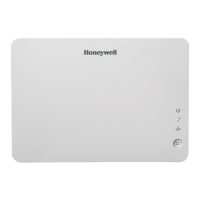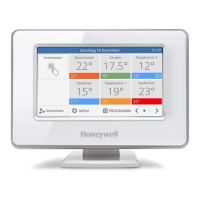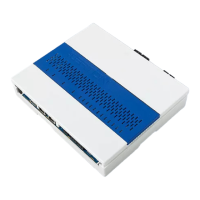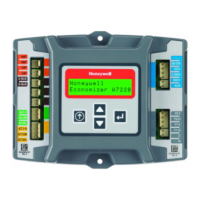ENGINEERING MANUAL OF AUTOMATIC CONTROL
CONTROL FUNDAMENTALS
7
SETPOINT
60
0
130
190
RESET SCHEDULE
HW
SETPOINT
OA
TEMPERATURE
160
159
148
AUTO
41
INPUT
OUTPUT
30
PERCENT
OPEN
VALVE
STEAM
FLOW
OUTDOOR
AIR
OUTDOOR
AIR
CONTROL
POINT
HOT WATER
RETURN
HOT WATER
SUPPLY
HOT WATER
SUPPLY
TEMPERATURE
CONTROLLED
MEDIUM
CONTROLLED
VARIABLE
MEASURED
VARIABLE
MEASURED
VARIABLE
SETPOINT
ALGORITHM IN
CONTROLLER
FINAL CONTROL
ELEMENT
CONTROL
AGENT
MANIPULATED
VARIABLE
M10510
Proportional control: A control algorithm or method in which
the final control element moves to a position
proportional to the deviation of the value of the
controlled variable from the setpoint.
Proportional-Integral (PI) control: A control algorithm that
combines the proportional (proportional response)
and integral (reset response) control algorithms. Reset
response tends to correct the offset resulting from
proportional control. Also called “proportional-plus-
reset” or “two-mode” control.
Proportional-Integral-Derivative (PID) control: A control
algorithm that enhances the PI control algorithm by
adding a component that is proportional to the rate of
change (derivative) of the deviation of the controlled
variable. Compensates for system dynamics and
allows faster control response. Also called “three-
mode” or “rate-reset” control.
Reset Control: See Compensation control.
Sensing element: A device or component that measures the
value of a variable.
Setpoint: The value at which the controller is set (e.g., the
desired room temperature set on a thermostat). The
desired control point.
Short cycling: See Cycling.
Step control: Control method in which a multiple-switch
assembly sequentially switches equipment (e.g.,
electric heat, multiple chillers) as the controller input
varies through the proportional band. Step controllers
may be actuator driven, electronic, or directly
activated by the sensed medium (e.g., pressure,
temperature).
Throttling range: In a proportional controller, the control point
range through which the controlled variable must pass
to move the final control element through its full
operating range. Expressed in values of the controlled
variable (e.g., degrees Fahrenheit, percent relative
humidity, pounds per square inch). Also called
“proportional band”. In a proportional room
thermostat, the temperature change required to drive
the manipulated variable from full off to full on.
Time constant: The time required for a dynamic component,
such as a sensor, or a control system to reach 63.2
percent of the total response to an instantaneous (or
“step”) change to its input. Typically used to judge
the responsiveness of the component or system.
Two-position control: See on/off control.
Zero energy band: An energy conservation technique that
allows temperatures to float between selected settings,
thereby preventing the consumption of heating or
cooling energy while the temperature is in this range.
Zoning: The practice of dividing a building into sections for
heating and cooling control so that one controller is
sufficient to determine the heating and cooling
requirements for the section.
Fig. 1. Typical Control Loop.

